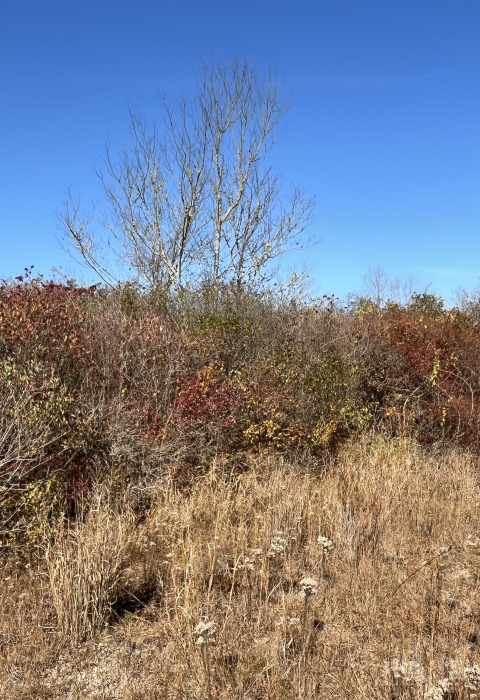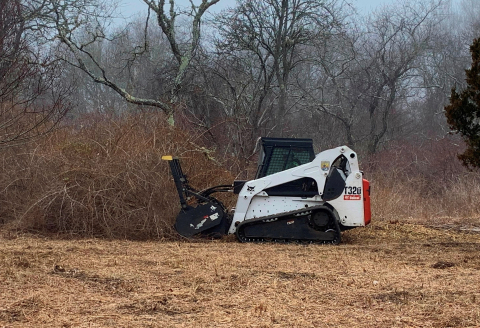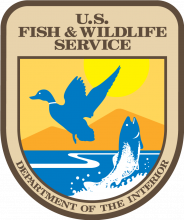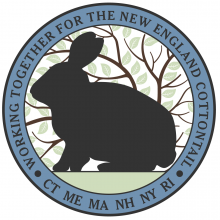National Wildlife Refuge Project
This refuge is an important autumn stopover for migratory songbirds, where they can rest in thick coastal shrubland and feed on wild fruits to fuel their journey south. The refuge also offers key habitat to the New England cottontail, a rare native rabbit.
Once a naval base, Ninigret is now part of the Rhode Island National Wildlife Refuge Complex. On 388 acres of the Salt Pond Unit, biologist Nick Ernst oversees a wide range of measures used to create and enhance young forest and shrubland.
Early Successional Habitat Fuels Migration
Workers mow thinning older shrubs so that low groundcover plants can flourish beneath them, and so that the shrubs grow back more vigorously from their rootstocks and produce better food and cover. Prescribed burning also stimulates dense shrub regrowth. Removing nonnative invasive shrubs lets native kinds thrive and spread.
Ernst points out that young forest and shrubland are an ephemeral habitat, so the work to refresh them is ongoing: “We use habitat management techniques to mimic or supplement the natural processes that maintain coastal shrubland and forests. Our goal is to make 15 to 30 acres of habitat each year.”
Important native shrubs and vines include viburnums, shadbush, bayberry, Virginia rose, beach plum, highbush blueberry, greenbriar, Virginia creeper, and poison ivy. Eastern redcedar and black cherry are key fruit-producing trees.
Monarch Butterflies Benefit
Pollinators, including native bees, visit flowers and find nesting sites. Monarch butterflies stop at Ninigret during their southward migration in autumn, getting important nectar from goldenrod and native asters.
American woodcock, prairie warblers, field sparrows, eastern towhees, and blue-winged warblers are among the early successional birds that breed on the refuge. Overall, more than 250 species of birds have been documented at Ninigret, including more than 70 kinds of breeding and migrating songbirds. Notes Ernst, “Coastal shrublands are particularly important to juvenile, hatch-year birds who are making a long migration to their non-breeding grounds for the first time.” One such bird is the blackpoll warbler, which makes an extended migration over the open waters of the Atlantic to wintering grounds in South America.
New England Cottontail
Ninigret has a 1-acre acclimation pen for New England cottontails. The pen is fenced and has a netting roof so predators can’t enter. Inside, rabbits produced through conservation breeding at nearby Roger Williams Park Zoo can get used to feeding on native vegetation and hiding when danger threatens. Later they are released into suitable habitat on Ninigret and elsewhere.
How to Visit
Ninigret is south and west of Charlestown just off US 1. The refuge has over 4 miles of hiking trails that are open from sunrise to sunset. The east parking lot offers good access, and a map shows the different routes.




